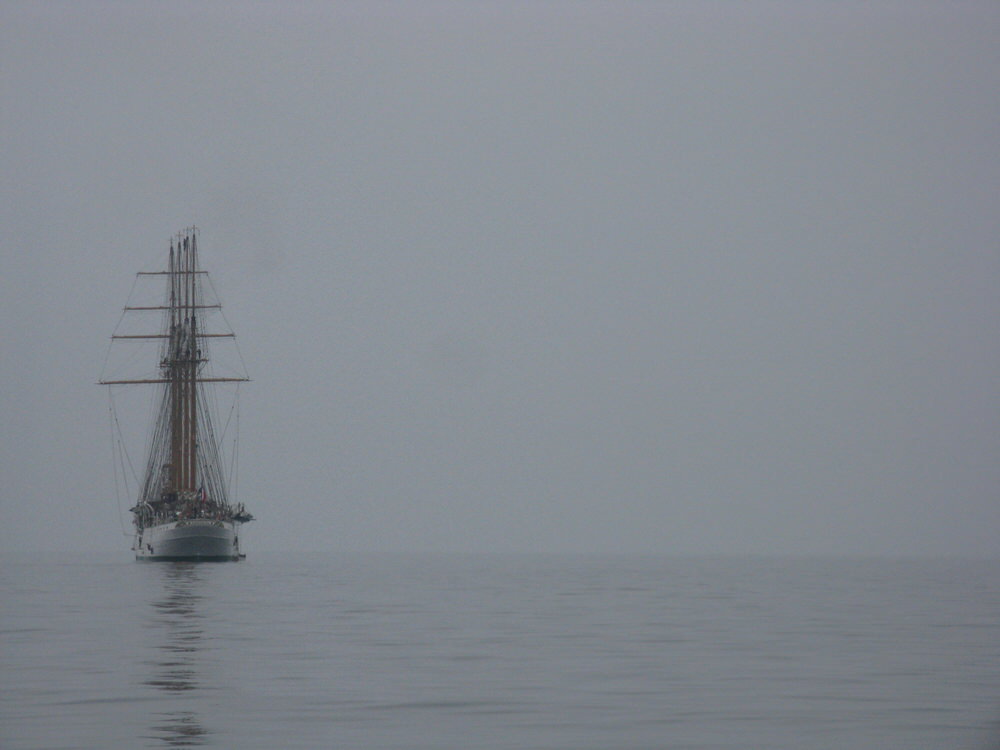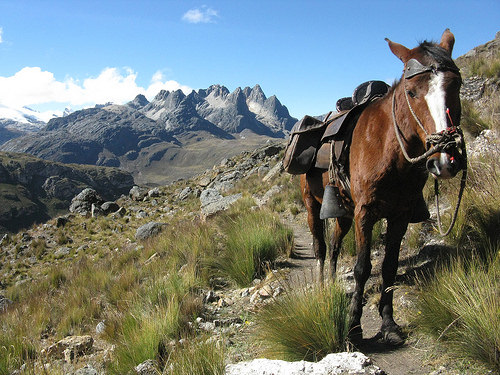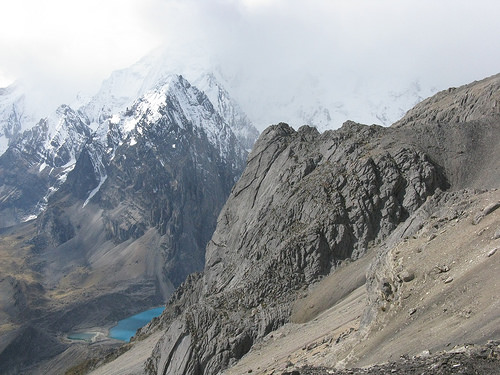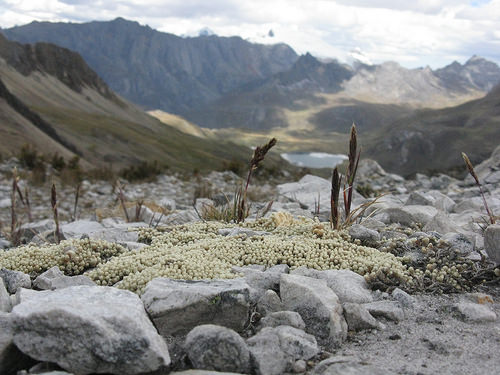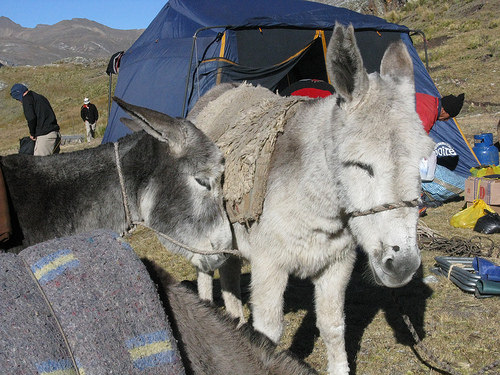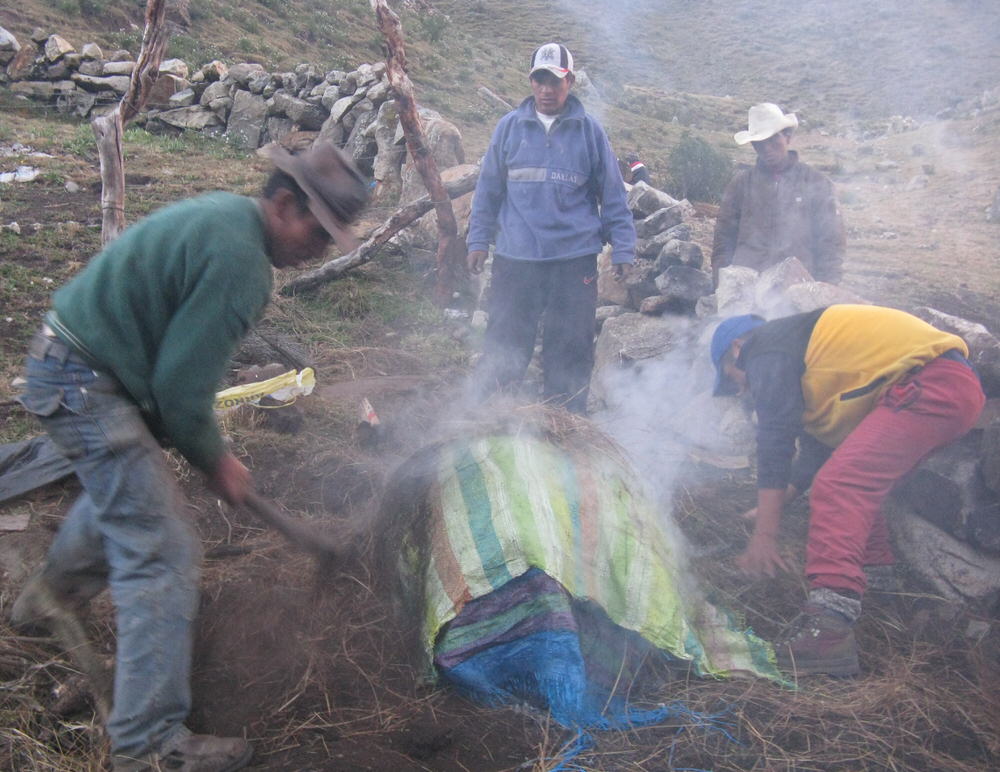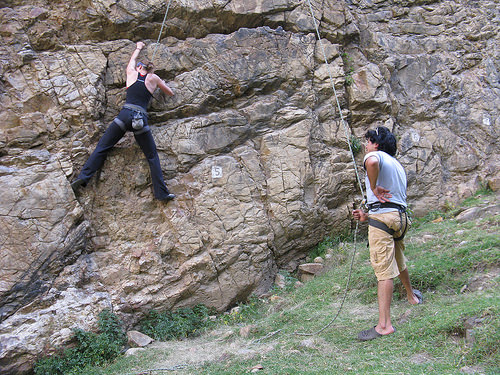After straddling the equator for a bit, I chose the northern side — just in time for my third summer in a row. Yes, it's true. I've returned to the United States after nine months living and working in South America. I am living temporarily at my parents’ house in hot, humid Greensboro, North Carolina — 6,000 miles from where I lived in Chile and 2,500 miles from Quito, Ecuador, the last place I visited.
 Me, backbending over the equator near Quito.
Me, backbending over the equator near Quito.
It’s nice to be reunited with friends, family and fluffy bath towels, with wardrobe choices, Claussen pickles and my bicycle. At the same time, though, I miss South America. I liked seeing women spinning wool on the sidewalks (that just doesn’t happen in Greensboro), men selling fresh-squeezed orange juice on street corners (sooo much tastier than concentrate from Bi-Lo) and long-lashed llamas strolling the central plazas with their owners (those underbites are so damn adorable). I liked cramming myself into the overcrowded collectivos, the vans that transport you as far as you need to go for 10 cents, and striking up conversations with whoever was mashed against me. The colors and smells in South America are so vibrant. I don't get the same sense of vitality driving around here in my air-conditioned car.
In the name of nostalgia, and before I forget, let me share a few stories from my travels with my sister Laura:
- Many of the women in Bolivia and Peru, especially those who live in the countryside, wear bowler hats with their traditional pleated skirts and woven shawls. We learned that a hat’s shape and style indicates its wearer’s hometown and maritial status. The cab driver who drove us to and from a trailhead outside Huaraz, Peru, appointed himself our personal headwear translator. “That woman is looking for a husband,” he said in Spanish, as we rumbled, windows down, past a teengage girl in a low bowler. “She’s married,” he said as we passed a woman standing in the doorway of a house. Then, a few minutes later, he pointed at a woman in a field by the road and shouted: “WIDOW!”
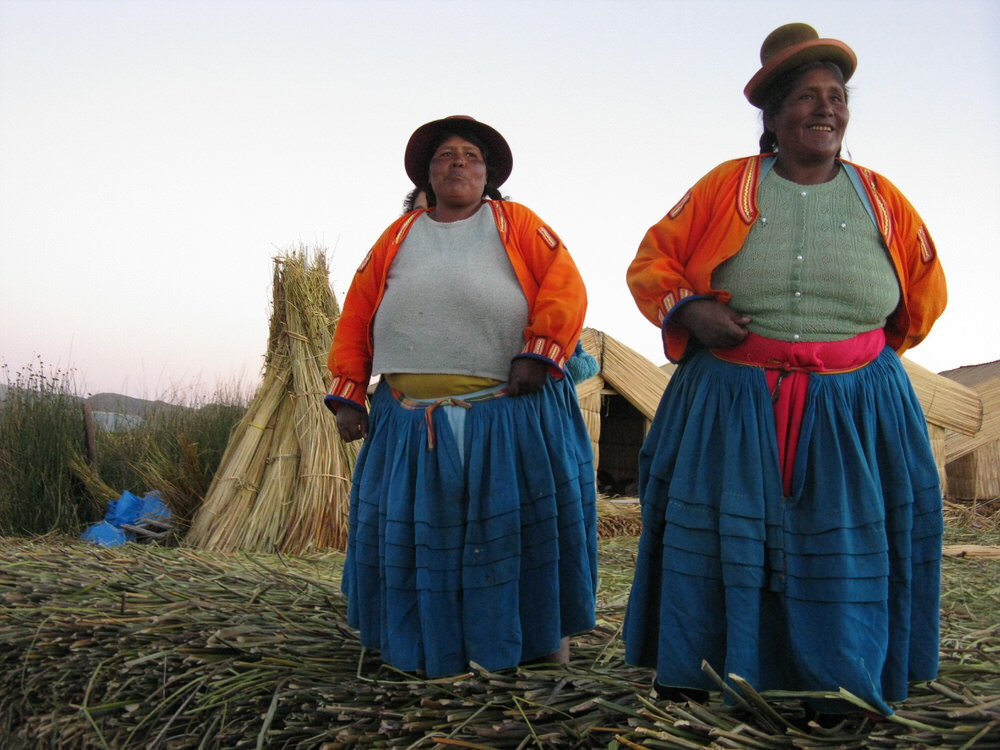 OK, so these women weren't among those whose civil status our cab driver identified — these two live on floating reed islands in the middle of Lake Titicaca — but, they ARE wearing bowler hats.
OK, so these women weren't among those whose civil status our cab driver identified — these two live on floating reed islands in the middle of Lake Titicaca — but, they ARE wearing bowler hats.
- The garbage trucks in Huaraz, Peru blast music from loudspeakers as they collect the city’s trash. Several times as we were walking through town, we heard symphonies and concertos blasting at top volume. We looked around for the source of the noise, then realized it was coming from… yes, the garbage truck.
- The mousy middle-aged woman tending our hostel in Valparaiso, Chile, was very concerned about keeping the place safe while the owner was out of town. “Don’t let any strangers in,” she told us in Spanish as she handed us the keys to the front door. “People in this city are liars and thieves. They’ll tell you anything to get inside, then steal all your things.” Later that day, as she slipped on her coat to run an errand, she stopped by our room to issue another reminder: “I’m going down the street,” she said. “Don't let anyone in while I'm gone.” Laura looked at me in mock confusion after she had left, bolting the door behind her. “I don't quite get what she's saying," she said. "Is it OK to let strangers in?"
 A Valparaiso hillside through power lines
A Valparaiso hillside through power lines
 A mural we found at the top of one of the city's ascensores, or elevators
A mural we found at the top of one of the city's ascensores, or elevators
- Our Peruvian guide through Machu Picchu, God bless him, spoke in English with such unusual pronunciation and sentence structure that it was nearly impossible to understand him. He leaned forward, clenched his fists and closed his eyes anytime he had to squeeze out a word of more than one syllable. And, rather than speaking in sentences with subjects, verbs and direct objects, he strung together various words semi-related to the same topic. “The water mirror, the observer, the reflection of the sun, the reflection, the star of the night,” he explained of a pool of water within the ruins. My sister Laura and I found his animated but incomprehensible delivery absolutely hilarious. But it’s not OK to laugh at someone. It’s very rude, in fact. And so we separated from each other so as not to feed each other’s hysterics. “Sad thoughts, sad thoughts, sad thoughts,” I told myself, breathing in through my nose and out through my mouth. I managed to reign in my laughter, but just barely. On the other side of our group, Laura was not so successful. By the end of the guide’s explanation, she had tears streaming down her face. The guide noticed her disheveled state and approached her. It’s OK, he said. Many people find Machu Picchu to be a spiritual place. It’s not unusual to cry. “Oh, good,” she said.
- We found ourselves running to and from the bathroom a lot more than usual at the high-altitude Hualla Jarra hostel, located in the middle of the stark Bolivian desert. During one trip to the co-ed bathroom, I stood up after using the toilet and found myself face to face with a Dutch guy, tall as me, peeing in the adjoining stall. While still taking care of business, he turned, looked me in the eye, and said, “Did you know that altitude increases bladder capacity?” I'm still not sure what his name is.
 Alexis in the breezeway of the Hualla Jarra hostel (not peeing, but probably thinking about it)
Alexis in the breezeway of the Hualla Jarra hostel (not peeing, but probably thinking about it)
- The driver of a pickup truck would not let our bus pass him on a narrow dirt road through the Bolivian countryside. When our driver finally managed to edge his way around the stubborn truck, his assistant leaned out the window and emptied a cup of water into the offending vehicle’s open front window. The driver was drenched, and we were off.
- In La Paz, we went to a soccer game between the capitol's two teams — El Club Bolívar and The Strongest. Against the better judgment of the boys in our group, we decided to root for Club Bolívar because their name wasn't in English and their uniforms were prettier (light blue, compared to black and yellow). I think we might have been the most devoted fans there; We showed up a full hour before anyone else and were constantly ready to kick ass.
 Our team didn't do so well during the first half of the game, causing the boys to want to defect to The Strongest side. Fortunately, they stayed faithful to the underdogs, and Bolivar pulled off a tie (probably because they looked so good in their uniforms). I must say, though, I'm impressed with all the players, who manage to sprint around for an hour at 12,000 feet above sea level.
Our team didn't do so well during the first half of the game, causing the boys to want to defect to The Strongest side. Fortunately, they stayed faithful to the underdogs, and Bolivar pulled off a tie (probably because they looked so good in their uniforms). I must say, though, I'm impressed with all the players, who manage to sprint around for an hour at 12,000 feet above sea level.
- For some reason, our backpacks exploded every time we uncinched their straps. We never had any casualties, but there were some close calls.
I hope, as I reacclimate to life in the U.S.A., I can hold onto some of the things I learned during my travels. I'd like my adventure to be something that impacts who I am and how I experience life.
For one, I'd like to continue living with the same simplicity as in South America. OK, so maybe I won't wear the same shirt EVERY day — but, I'd like to keep in mind that for nine months, I lived out of a backpack and was absolutely fine. Too much stuff clutters me up and weighs me down, even here, where I'm not carrying it all on my back.
I'd like to maintain the same resourcefulness and flexibility I developed on the road and remain as open with other people as when I was traveling.
In addition, I hope exposure to different cultures and ways of life can inform my own — can make me more aware of the varying backgrounds and situations of people in the United States and more grateful for the opportunities I have in my life. So many people we saw in rural South America follow their parents into farming or herding and never leave their villages because they don't have the chance. While their's is just as valid a way of life, I'm grateful for the choices I can make about what to study, where to work and how to live — and the opportunity I have to travel and see other parts of the world.
Finally, I'd like to maintain the friendships I built in South America, especially in Patagonia, where I lived the longest. Each of my friends there — and from the road — enriched my experience tremendously, and I hope we can stay in touch for a long time to come.

